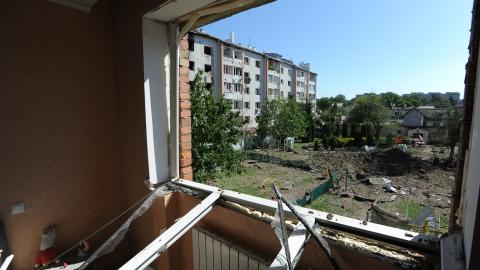A year and a half after Russia’s invasion of Ukraine began in February 2021, the “special military operation” that Vladimir Putin thought would be quick and decisive has turned into a war of attrition with no end in sight.
The cost has been high on both sides. Neither side releases figures for the number of soldiers killed or wounded but the combined total is likely to be in the hundreds of thousands. There is plenty of photographic and video evidence showing thousands of tanks, armored vehicles, helicopters, and fighter jets destroyed or damaged.
As the war enters the second half of 2023, four observations are worth making about the state of the conflict.
First, though neither side is ready to stop fighting, the international community must work to bring the conflict to an end in a fair and just way that respects Ukraine’s territorial integrity. Ukraine sees the conflict as one of national survival. If Russia stops fighting, the war ends. If Kyiv stops fighting, Ukraine ends. Ukraine is in the middle of a counteroffensive that is starting to pick up steam in the south. Meanwhile Russia is in the process of starting its next wave of mobilization to send fresh recruits to the front lines. Right now, neither side is ready to throw in the towel.
Even so, some in the international community are starting to lay the groundwork for a peace settlement. Saudi Arabia has probably been the most effective. For Ukraine, this month’s peace summit in Jeddah was an important opportunity to make its case for what it expects from any peace deal with Russia. As Foreign Minister Dmytro Kuleba said, a peace agreement must be based on the UN Charter and international law. While the summit achieved no major breakthrough, Kuleba said: “We’re definitely moving in that direction at a good pace and this is going to happen.”
Second, technological breakthroughs are important in modern warfare, but traditional wars of attrition are not going away. With the proliferation of smartphones and social media, no war in human history has ever been more documented. Hours of new video footage of the fighting emerge on the internet every day. Some show amazing acts of heroism. Others document war crimes. There are also demonstrations of new and creative uses of existing technologies on the battlefield. For example, videos showing commercial drones being used to drop a cheap hand grenade down the open hatch to destroy a multimillion-dollar tank are almost a daily occurrence.
However, the best lesson to learn in this regard is that wars of attrition are still a reality. Even with all the commercial drones buzzing around the skies, each side is shooting more artillery rounds a day than some European countries produce in a year. Artillery is being used at a rate reminiscent of the Western Front in the First World War. The trench warfare that made its battlefield debut in 1864 during the Siege of Petersburg in the American Civil War remains a reality in eastern Ukraine today. Drones and other technological advancements may help an army, but modern warfare still requires countries to maintain a robust defense industrial base able to produce munitions and weapons on a massive scale.
Third, this winter will be a lot different from last winter for Ukraine. Then, it lacked the air defense systems it needed to adequately protect its airspace. Electricity rationing and rolling blackouts were almost a daily occurrence because of attacks on the electrical grid.
However, Ukraine has now received some of the most advanced air defense systems ever made, and more are arriving regularly. It has also been able to make its electrical grid more resilient against Russian attacks,so much so that Ukraine began exporting surplus electricity to Europe this summer. Europe is also better prepared for this winter. After a rush to diversify away from Russian energy sources, it has found new sources of natural gas, including Gulf countries. In fact, EU natural gas inventories are at the fullest on record.
Finally, 18 months after fighting broke out, Ukrainian agricultural exports remain uncertain — and countries of the Global South should be concerned. Before the invasion, Ukraine was one of the world’s largest exporters of agricultural products. The Middle East and North Africa region, in particular, is dependent on Ukrainian grain. For example, before the war, 81 percent of Lebanon’s wheat imports came from Ukraine. For Qatar, the total was 64 percent. About half of Tunisian and Libyan wheat imports came from Ukraine, as did just over a quarter of Egypt’s.
Last summer Türkiye brokered an agreement between Russia and Ukraine that allowed Ukrainian agricultural exports to be safely shipped, but this deal ended last month when Russia pulled out. Since then, Russia has been targeting facilities involved in exporting Ukraine’s agricultural products to global markets. Unless pressure is put on Moscow to re-enter the deal, parts of the world could face a food shortage.
At this rate the war is likely to continue well beyond 2024. Global decision-makers need to be prepared for this reality. Allowing countries to use military force to take territory from their neighbors without any consequence belongs in the 19th century.
Any meaningful prospects for peace will be determined by the amount of diplomatic pressure they can be placed on Russia to respect Ukraine’s internationally recognized borders and territorial integrity. Hopefully, the summit in Jeddah has planted the seed that will some day lead to the end of the war in a just and honorable way.



















